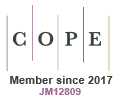The sociogenetic structure of a controlled feral pig population
Peter B. S. Spencer A C , Steve J. Lapidge B , Jordan O. Hampton A and John R. Pluske AA School of Veterinary and Biomedical Sciences, Murdoch University, Murdoch, WA 6150 Australia.
B Pest Animal Control Cooperative Research Centre, GPO Box 284, Canberra, ACT 2601, Australia and Queensland Department of Natural Resources and Mines, PO Box 318, Toowoomba, Qld 4350, Australia.
C Corresponding author. Email: P.Spencer@murdoch.edu.au
Wildlife Research 32(4) 297-304 https://doi.org/10.1071/WR04076
Submitted: 8 September 2004 Accepted: 24 May 2005 Published: 5 July 2005
Abstract
In Australia, the feral pig (Sus scrofa) is a significant vertebrate pest that has an impact on agricultural production, public health and ecosystem integrity. Although feral pigs are controlled throughout much of their range, little is known about the impact that these control programs have had on the social biology, structure and the dispersal of pigs. To begin to address this, we collected demographic data and genetic samples from 123 feral pigs culled during a regional aerial shooting program over 33 pastoral properties in the semi-arid rangelands of southern Queensland, Australia. Sampling was carried out after two years of extensive control efforts (aerial 1080-baiting) and the samples therefore represented a controlled, persecuted population with a bias towards young animals. The analysis of 13 microsatellite loci suggested that females will accept multiple matings, females form loose mobs that appear to be highly dynamic social groups, and males will travel large distances between mobs. These data indicate that feral pigs in this population had a high level of social contact and form a single open population with no evidence of genetic (population) structuring. Such information may be important to integrate into management strategies, particularly the development of contingency plans regarding the spread of wildlife diseases.
Acknowledgments
We thank M. Derrick, C. Hunter, J. Farrell, M. Wingett, R. Cobon and J. Kennedy (MI Helicopters) for assisting in organisation and collection of samples. L. E. Twigg, three reviewers and the editor made valuable comments on earlier versions. We are also grateful for the USA Department of Agriculture support from the USA Pig Genome Coordination Project (M. Rothschild). This research was supported by the Noorama Bestprac Group, the Australian Government National Feral Animal Control Program, Murdoch University, Macquarie Bank and the WA Department of Conservation and Land Management. This project was approved by the Queensland Department of Natural Resources and Mines Pest Animal Ethics Committee.
Agrawal, A. A. (2001). Phenotypic plasticity and the interactions and evolution of species. Science 294, 321–326.
| Crossref | GoogleScholarGoogle Scholar |
Caley, P. (1997). Movements, activity patterns and habitat use of feral pigs (Sus scrofa) in a tropical habitat. Wildlife Research 24, 77–87.
| Crossref | GoogleScholarGoogle Scholar |
Choquenot, D. , Kilgour, R. J. , and Lukins, B. S. (1993). An evaluation of feral pig trapping. Wildlife Research 20, 15–22.
Crooks, J. A. (2002). Characterizing ecosystem-level consequences of biological invasions: the role of ecosystem engineers Oikos 97, 153–166.
| Crossref | GoogleScholarGoogle Scholar |
Hampton, J. O. , Spencer, P. B. S. , Alpers, D. L. , Twigg, L. E. , Woolnough, A. P. , Doust, J. , Higgs, T. , and Pluske, J. (2004a). Molecular techniques, wildlife management and the importance of genetic population structure and dispersal: a case study with feral pigs. Journal of Applied Ecology 41, 735–743.
| Crossref | GoogleScholarGoogle Scholar |
Marshall, T. C. , Slate, J. , Kruuk, L. E. B. , and Pemberton, J. M. (1998). Statistical confidence for likelihood-based paternity inference in natural populations. Molecular Ecology 7, 639–655.
| Crossref | GoogleScholarGoogle Scholar |
Pech, R. P. , and Hone, J. (1988). A model of the dynamics and control of an outbreak of foot-and mouth disease in feral pigs in Australia. Journal of Applied Ecology 25, 63–77.
Spencer, P. B. S. , and Hampton, J. (2005). Illegal translocation and genetic structure of feral pigs in Western Australia. The Journal of Wildlife Management 69, 377–384.
Zenger, K. R. , Eldridge, M. D. B. , and Cooper, D. W. (2003). Intraspecific variation, sex-biased dispersal and phylogeography of the eastern grey kangaroo (Macropus giganteus). Heredity 91, 153–162.
| Crossref | GoogleScholarGoogle Scholar |



